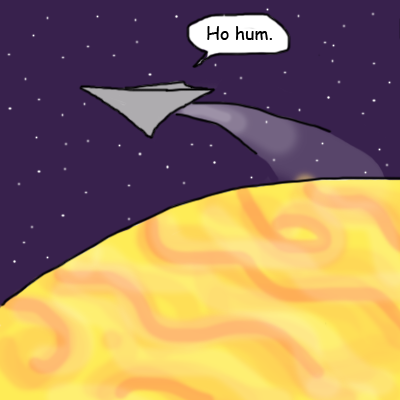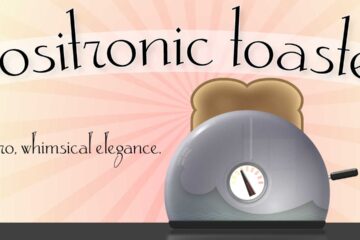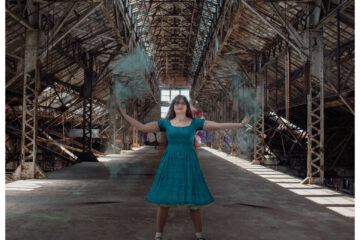You’ve seen it before, on Star Trek or an episode of the Twilight Zone, in movies and books and slush pile stories: in this story, the white people are oppressed! Or it’s a matriarchy or in this society it’s normal to be gay and shunned to be straight… etc, etc.
99.99% of these attempts to explore a concept by inverting it are painfully awful, and I’m here to tell you why.
Just last night, I was watching Buffy the Vampire Slayer, season Six, Buffy and Spike’s romance arc. “It doesn’t work,” I said. “The writers are trying to reverse the roles, and it could be so cool, but they fall short.”
“Simple role reversal never works,” my husband said, and I got a wee bit mad at him.
“Because they never do simple role reversal!” I said. “They swap parts of the roles, but they leave all the patriarchy intact.”
And then I got mad at myself, because that wasn’t quite it, either.
I think it matters who does the role reversing. When Samuel R. Delaney has blonde savages and dark-skinned elites in Neveryon, it serves a purpose of not perpetuating harmful stereotypes. I argue that it is necessary that the writer in this case know what it feels like to be the target of the harmful stereotypes he is combatting. It’s only from the bottom of the boot of oppression you get a good, unobstructed look at it. Otherwise, you miss what’s really going on.
When Star Trek the Next Generation had a Planet Where Women Rule, it was written from a male perspective, well-meaning (I will charitably hope) but blind to what sexism is really about. They reinforce the idea that sexism is natural by having the men on Angel One be “naturally” weaker. They make sexism about Bad Women who Treat Men Badly, not about all of society being complicit in systemic inequities.
Because, you see, if sexism is about a few people being mean, then you, the gender-powerful author, are not part of the problem. Neither is your nice audience. Everyone is happy. Except the actually oppressed who look at your attempt to portray their struggle and wince.
Look at any book about The Black Experience(tm) written by a white person. “The Help” is the perennial target, but there are others. There will be Good White People and Bad White People and oppression will be very much shown as the actions of those Bad People. If there were only good people, you see, the badness would just stop, without the need for any silly old laws or regulations to protect the powerless! Mmmmmhmmmm.
This blindness carries over when authors (especially, Gort save us, science fiction authors) try to “reverse” oppressions in their stories or invent metaphorical minorities to show that they Get It without having to tread on dangerous ground. They make the oppression about Bad Actions or Bad Actors.
Let’s get back to Buffy the Vampire Slayer, because that’s what started this.
Spike and Buffy’s relationship excited me at first because I thought it would be a role reversal – Buffy had all the power in the relationship, and was the sexual aggressor. But the writers for whatever reason couldn’t let that stand. Instead they continually showed Buffy crying, hugging herself, acting as though she was powerless.
I blame the following toxic patriarchal trope: Women should be ashamed if they want sex. They should not pick sexual partners based on attractiveness at all, but rather reward their chaste bodies to Worthy Men whom they will love emotionally and accept that icky sex thing as something they have to put up with for the love.
SRSLY. The only time we see Buffy reveling in enjoying Spike – and he looks mighty enjoyable – is when she’s invisible. In the scene, she even confesses that it’s because she is “not herself” and therefore “Free.”
Free not to feel ashamed. Ashamed of wanting to have sex with a hot guy? Suffering Sapho! There is no reason she should feel ashamed. If she does, that’s something the story could address instead of taking it as a given and accepting her shame as appropriate.
We never SEE her desire, only her regret. We see her from the male, patriarchal perspective – her conflict is from not conforming to how a Good Girl Should Be.(TM)
I digress. I could write a thousand-page thesis on this relationship. I know we’ve come some way since Buffy the Vampire Slayer, but we also haven’t come as far as we should have.
Every time I read a story that attempts to reverse roles in some way, I always feel they don’t go far enough. I have never SEEN simple reversal. The author always shies away, doesn’t want to reverse THAT paradigm, or that other one – the ones so sacred that they are considered inviolable.
Women are in control, but they possess qualities we associate with men.
The woman is in the relationship for sex and the man for love, but only the man is shown petitioning for sex.
I went through a phase where I changed the gender of one character per story and I found that this almost always created things that FELT wrong. A line of dialog, or something as small as a touch on a shoulder, carried heavy gendered implications that stood out like compression artifacts on a badly-copied image. I’d wince. “Oh no, that can’t stand. Brad feels creepy helping the kid where Bridget felt compassionate.”
But why can’t Brad help the kid? Shouldn’t a good writer be able to convey the right emotion? How much editing of this scene can I get away with without being complicit in gender role stereotypes?
It takes a physical effort of will not to trim away these violations of patriarchal expectation.
I look forward to the day when I can read another story where the old inversion trick actually works as well as it does for Neveryon. (And I didn’t even tell you about the delightful women-pee-standing-up scene.)


